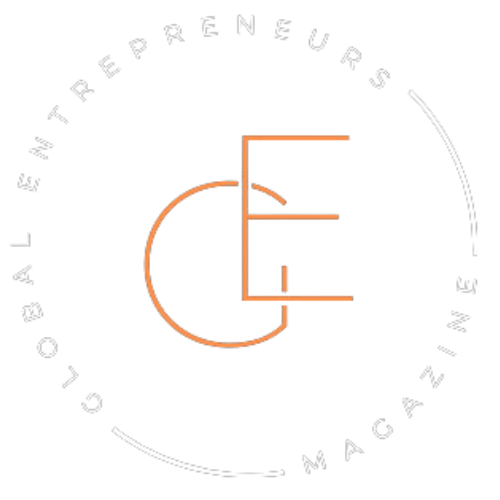There’s always that one person in the room who doesn’t nod when everyone else does. The one who’s not impressed with the latest “next big thing.” While everyone scrambles to ride the wave, they’re busy sketching blueprints for a different shore altogether.
Years ago, while Silicon Valley rushed to build yet another photo-sharing app, one quiet team in a rented apartment asked: what if people wanted to stay in a stranger’s home? It didn’t make sense at the time. Investors laughed. Advisors warned them. But they kept building anyway.
You know how that story ends. Airbnb didn’t follow a trend. It started one.
That’s the thing about visionaries. They don’t wait for proof. They don’t check the temperature. They’re not in the business of following paths—they’re in the habit of noticing what’s missing and having the nerve to build it.
Because trends are crowded. But the future? The future is wide open.
Trends are snapshots. Vision is a compass.
Trends feel urgent. They flash across headlines, fill up LinkedIn feeds, and spark FOMO in boardrooms. But they’re almost always built on what’s already happened. They’re reactions—echoes of something that worked yesterday.
Vision doesn’t care about yesterday.
Back when every phone company was racing to make their keyboards smaller, Steve Jobs killed the keyboard entirely. People called it arrogant. Unnecessary. Even stupid. But Jobs wasn’t solving for now—he was solving for next. While others squinted at trend reports, he was staring at a blank canvas.
That’s how vision works. It doesn’t ask, “What are people doing?” It asks, “What are people about to need?” And more often than not, it refuses to take cues from the crowd.
Because following trends is like reading last week’s weather report. Helpful, maybe. But not if you’re trying to chart your own course.\
Chasing trends kills original thinking
There’s a quiet pressure in business to “not fall behind.” It’s subtle, but it creeps in fast. Suddenly, every brand starts talking the same way, offering the same things, using the same buzzwords. Originality gets traded for safety. And safety? It rarely moves anything forward.
A few years back, a founder built a startup around voice-based social networking. After Clubhouse went viral, the clones came out in full force. Everyone wanted a slice. That founder? He scrapped his roadmap, pivoted hard to keep up, and rushed a product to market that looked like every other copycat.
It fizzled. Not because the idea was bad, but because it wasn’t his anymore.
Vision doesn’t survive when it’s constantly reacting. It shrinks. It folds itself into templates. It second-guesses. And in doing so, it loses the sharp edge that made it powerful to begin with.
Original thinking doesn’t come from watching the market. It comes from questioning it.
Vision requires sitting with discomfort
There’s a stretch of time—right after you commit to something bold and right before anyone else sees it—that feels like freefall. No applause. No proof. Just silence. That’s where vision lives.
Most people bail during that silence. It’s easier to pivot back to something familiar than to sit with the ache of being early. But visionaries? They stay. Not because they like the discomfort—but because they trust what they saw, even if no one else saw it yet.
Think of Sara Blakely, walking into rooms full of suits, pitching shapewear before anyone even knew what to call it. She wasn’t following a trend. There wasn’t a category for what she was building. So she kept pitching. Kept getting weird looks. Kept going.
The market didn’t make room for her. She carved it out herself.
That’s the cost of vision. You have to move before there’s applause. Sometimes before there’s even language.
Vision requires sitting with discomfort

There’s a stretch of time—right after you commit to something bold and right before anyone else sees it—that feels like freefall. No applause. No proof. Just silence. That’s where vision lives.
Most people bail during that silence. It’s easier to pivot back to something familiar than to sit with the ache of being early. But visionaries? They stay. Not because they like the discomfort—but because they trust what they saw, even if no one else saw it yet.
Think of Sara Blakely, walking into rooms full of suits, pitching shapewear before anyone even knew what to call it. She wasn’t following a trend. There wasn’t a category for what she was building. So she kept pitching. Kept getting weird looks. Kept going.
The market didn’t make room for her. She carved it out herself.
That’s the cost of vision. You have to move before there’s applause. Sometimes before there’s even language.
Real vision is rooted in obsession, not observation
Trend-watchers scroll. Visionaries fixate.
They don’t glance at the market—they study a problem until it keeps them up at night. They don’t ask, “What’s hot right now?” They ask, “Why hasn’t anyone solved this yet?” And then they go all in, even if no one’s asking for it.
James Dyson made over 5,000 prototypes before he got the vacuum right. Not because anyone begged for a better one, but because the problem bugged him. He couldn’t not solve it. That kind of obsession doesn’t come from watching what’s popular. It comes from being haunted by what’s broken.
Trends invite you to ride momentum. Vision asks you to build your own, brick by stubborn brick.
The best ideas—the ones that change things—don’t come from market research. They come from noticing what’s missing and refusing to let it stay that way.
Creating trends takes longer—and that’s the point
Everything around us screams for speed. Move fast. Launch faster. If it’s not going viral in a month, is it even worth it? But creating something original doesn’t come with a countdown. It takes time—longer than anyone wants to admit.
Vision doesn’t sprint. It lingers. It circles the idea until it’s right. Not perfect—right.
Think about Patagonia. Long before sustainability became a buzzword, they were rethinking supply chains, questioning materials, and telling customers to buy less. It wasn’t flashy. It wasn’t fast. But it was real. And now? Everyone’s trying to catch up to a standard they set quietly, years ago.
That’s what happens when you lead instead of react. You don’t just show up first—you shape what “good” even means.
The pace might frustrate people looking for shortcuts. But trendsetters aren’t here to rush. They’re here to build things that outlast the rush.
The market catches up to courage
At first, vision looks like a mistake. A misread. A risky bet no one asked you to take. People question it. Some laugh. Most ignore it altogether. But time has a way of bending toward bold decisions.
What once seemed strange becomes obvious in hindsight. What started as a lone voice starts echoing in boardrooms, product teams, and investor decks.
Peloton sold stationary bikes with screens before remote workouts were cool. Spanx redefined shapewear before anyone thought that category could even exist. These weren’t trends waiting to happen. They were risks someone had the guts to take.
And when the dust settles, the world remembers who moved first. Who built without permission. Who didn’t ask for validation before choosing to lead.
That’s what separates vision from noise: the willingness to act without a spotlight, knowing it might find you later.
You weren’t made to follow
If you’ve ever felt out of sync with the noise around you, good. That’s where vision begins. It’s not supposed to feel familiar. It’s supposed to feel like tension—like pulling on a thread no one else noticed.
The world doesn’t need more polished copies of what already exists. It needs more people willing to trust what they see before it’s popular. People who don’t wait for permission to build the thing that won’t leave them alone.
You don’t need a trend to tell you where to go. You need the nerve to stop looking sideways.
The future always starts with someone who chooses to go first.




